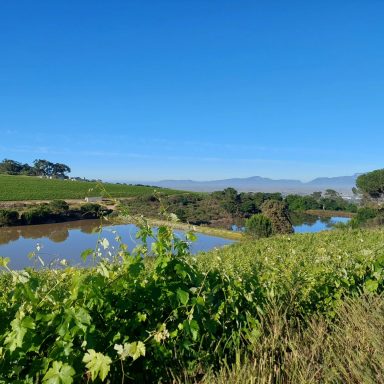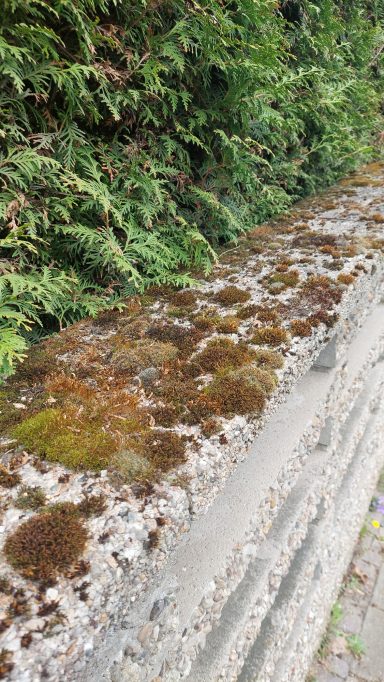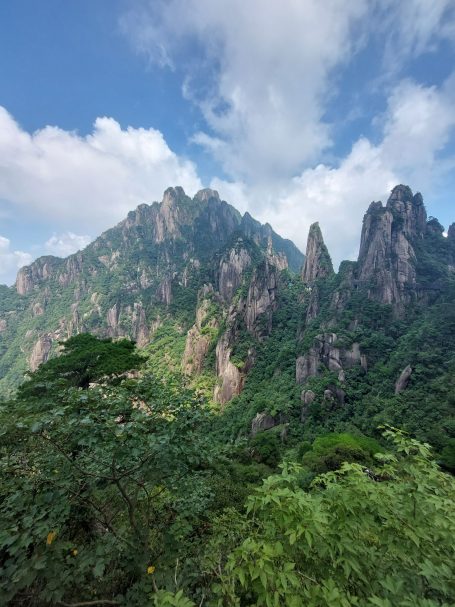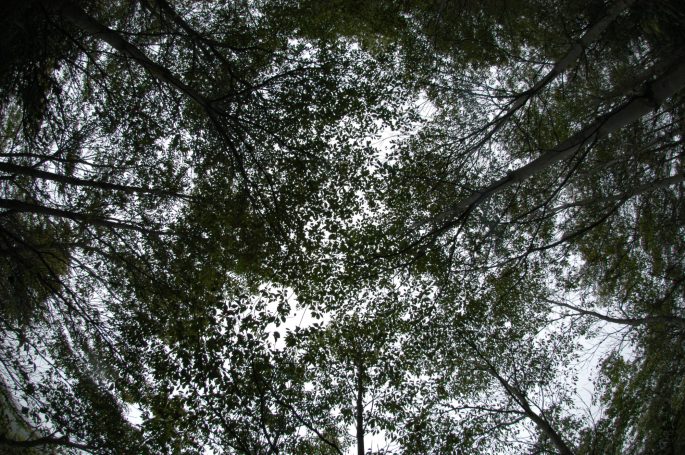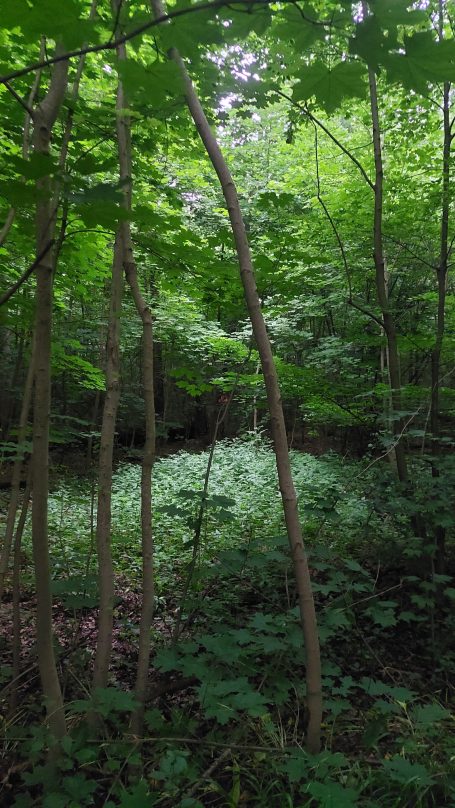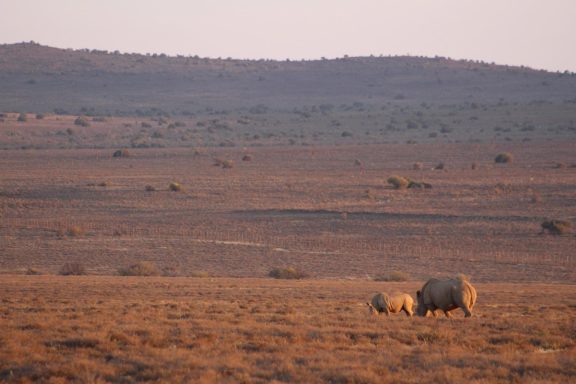The Art of Science
March
2025
My first post is inspired by my uncle who recently passed; Clemens-August Brüggemann. He took over the incredible “Landgasthof Haarmühle” from my grandparents and it is now in the 4th generation. He was extremely passionate about the surrounding nature and was very involved in sharing its history and conserving it: the Witte Venn is a protected recreational area which crosses the border between the Netherlands and Ahaus, Germany. It is a unique landscape consisting of heath, moorland and grassland and is home to a large diversity of plant and animal species. In addition, there are about 50 Scottish Highland cattle that maintain this landscape.
Cattle are often negatively perceived, as they are a major source of greenhouse gas emissions5. This is as a result of their digestive process, including enteric fermentation in the rumen, which is the biggest source of global emissions by livestock1. However, few people are aware that cattle can also have significant positive impacts on environments, including increasing biodiversity8,7. Incorporating grazing can lower dominance and increase evenness of various animal communities1, especially arthropods (e.g. insects, spiders, mites etc.) and increase the number of floral families. Furthermore, by feeding on shrubby or woody saplings, they aid in preventing wood encroachment1 in grasslands. They can even regulate cascades to other consumers, including termites, rodents, ticks, fleas and pathogens8. The impact that the cattle will have is very context dependent; including landscape and management practices such as stocking densities, species8 and feed2.
"Cattle in the Witte Ven"



- Ancillotto, L., Festa, F., De Benedetta, F., Cosentino, F., Pejic, B. and Russo, D., 2021. Free-ranging livestock and a diverse landscape structure increase bat foraging in mountainous landscapes. Agroforestry Systems, 95, pp.407-418.
- Broucek, J., 2014. Production of methane emissions from ruminant husbandry: a review. Journal of Environmental Protection, 5(15), p.1482.
- Grossi, G., Goglio, P., Vitali, A. and Williams, A.G., 2019. Livestock and climate change: impact of livestock on climate and mitigation strategies. Animal Frontiers, 9(1), pp.69-76.
- Malandra, F., Vitali, A., Urbinati, C. et al. Patterns and drivers of forest landscape change in the Apennines range, Italy. Reg Environ Change 19, 1973–1985 (2019). https://doi.org/10.1007/s10113-019-01531-6
- Smith, P., Bustamante, M., Ahammad, H., Clark, H., Dong, H., Elsiddig, E.A., Haberl, H., Harper, R., House, J., Jafari, M. and Masera, O., 2014. Agriculture, forestry and other land use (AFOLU). In Climate change 2014: mitigation of climate change. Contribution of Working Group III to the Fifth Assessment Report of the Intergovernmental Panel on Climate Change (pp. 811-922). Cambridge University Press.
- Tongwane, M.I. and Moeletsi, M.E., 2021. Provincial cattle carbon emissions from enteric fermentation and manure management in South Africa. Environmental Research, 195, p.110833.
- Troiano, C., Buglione, M., Petrelli, S., Belardinelli, S., De Natale, A., Svenning, J.-C., & Fulgione, D. (2021). Traditional Free-Ranging Livestock Farming as a Management Strategy for Biological and Cultural Landscape Diversity: A Case from the Southern Apennines. Land, 10(9), 957. https://doi.org/10.3390/land10090957
- Young, T.P., Porensky, L.M., Riginos, C., Veblen, K.E., Odadi, W.O., Kimuyu, D.M., Charles, G.K. and Young, H.S., 2018. Relationships between cattle and biodiversity in multiuse landscape revealed by Kenya Long-Term Exclosure Experiment. Rangeland Ecology & Management, 71(3), pp.281-291.


April
2025
The human population continues to increase exponentially and with it, so are anthropogenic effects on ecosystems. More people means increased urbanisation and more agriculture to keep up with food supply and demand, resulting in decreasing natural landscapes and the destruction of ecosystem structures1. This further weakens urban ecosystem functioning and resilience10,9. An important way to reduce biodiversity loss and local extinctions3, as well as maintain the provision of ecosystem services4 is through landscape connectivity. This is described as the degree to which a landscape facilitates or restricts the movement among resource patches. The term, therefore, includes both structural properties of the landscape, as well as its effect on the movement of organisms (behavioural process)8.
"It's all about connections"
- Field, R.D. & Parrott, L. (2017) ‘Multi-ecosystem services networks: A new perspective for assessing landscape connectivity and resilience’, Ecological Complexity, 32, pp.31-41.
- Hilty, J., Worboys, G.L., Keeley, A., Woodley, S., Lausche, B.J., Locke, H., Carr, M., Pulsford, I., Pittock, J., White, J.W. & Theobald, D.M. (2020) ‘Guidelines for conserving connectivity through ecological networks and corridors’, Best Practice Protected Area Guidelines, Series No. 30.
- Hyseni, C., Heino, J., Bini, L.M., Bjelke, U. and Johansson, F., 2021. The importance of blue and green landscape connectivity for biodiversity in urban ponds. Basic and Applied Ecology, 57, pp.129-145.
- Mitchell, M.G., Bennett, E.M. & Gonzalez, A. (2013) ‘Linking landscape connectivity and ecosystem service provision: current knowledge and research gaps’, Ecosystems, 16, pp.894-908.
- Nyström, M. & Folke, C. (2001) ‘Spatial resilience of coral reefs’, Ecosystems, 4 (5), pp. 406–417.
- Richards, N. (2021) ‘Why the Kruger Park is demolishing artificial water sources’, The Citizen, 26 March. Available at: https://www.citizen.co.za/news/south-africa/why-the-kruger-park-is-demolishing-artificial-water-sources/. (Accessed: 11.03.2025)
- SANParks (2009) Media Release: KNP to close more artificial water holes. Available at: https://www.sanparks.org/news/media-release-knp-to-close-more-artificial-water-holes. (Accessed: 11.03.2025)
- Taylor, P.D., Fahrig, L. & With, K.A. (2006) ‘Landscape connectivity: a return to the basics’ Conservation Biology Series, Cambridge, 14, p.29.
- Wang, S., Wu, M., Hu, M., Fan, C., Wang, T. & Xia, B. (2021) ‘Promoting landscape connectivity of highly urbanized area: An ecological network approach’, Ecological Indicators, 125, p.107487.
- Zhou, X., Wang, Y.C. (2011) ‘Spatial-temporal dynamics of urban green space in response to rapid urbanization and greening policies’. Landscape and Urban Planning, 100 (3), pp. 268–277.
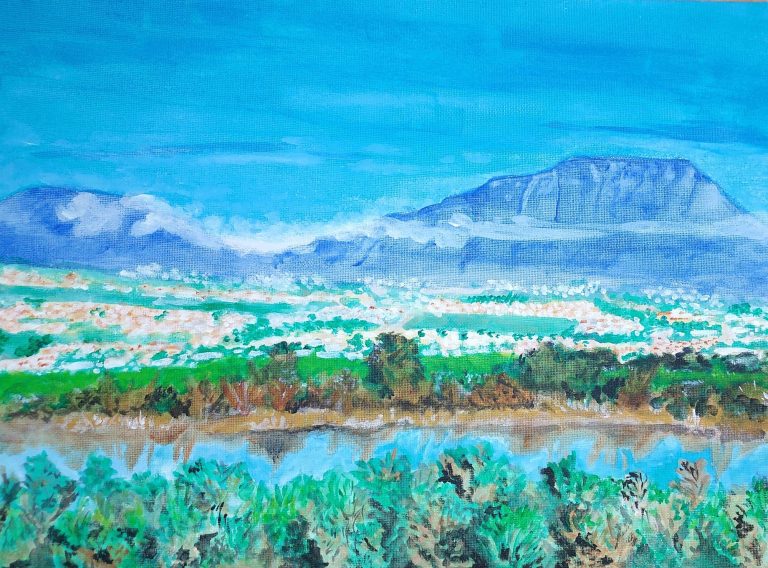
It is, however, important to note that landscape connectivity can also have negative impacts if not implemented correctly and is highly context and species-specific8. An example of where this went terribly wrong can be taken from the Kruger National Park, South Africa. In the 1900s, a total of 53 artificial water holes were created over several years, to increase the water access for animals6. This, however, had massive consequences; it led to several ecological problems such as erosion and other environmental degradation and increased the grazing competition between the abundant herbivores and rare antelope such as roan and sable. Drastic measures had to be taken to demolish certain artificial water holes7.
If you would like to read more on the topic, IUCN created a publication titled “Guidelines for conserving connectivity through ecological networks and corridors” :
Landscape connectivity can be achieved through several landscape elements including habitat patches (nodes) and links between them; either physical (e.g. habitat corridors) or functional connections, such as species or gene dispersal or water flow. How these elements are arranged as well as the strengths of the links effect how they will support the resilience of the landscape1 (in other words how it will recover after disturbance5). An example of landscape connectivity which helps buffer the negative effects of urbanisation, is urban greening (green spaces such as parks, forests) as well as “bluing” (e.g. through ponds and rivers), connected by corridors which allow organisms to disperse between locations3. Small stepping stones can even be created by simply covering walls or roofs with plants.
May 2025
"Where humans and wildlife meet"
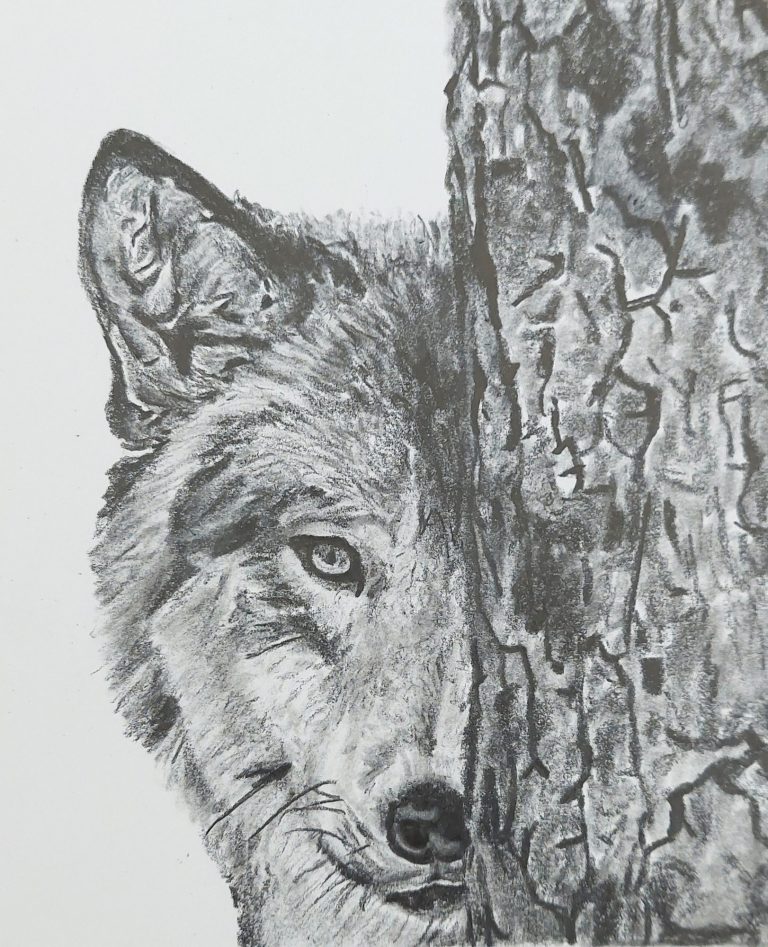
Human-wildlife conflict is described as direct interactions between humans and wildlife, with adverse outcomes for one or both parties. This matter includes a large variety of animals and situations. These circumstances often result from the co-occurrence of humans and wildlife in a shared landscape, in search of limited resources₁.
Costs on the local people can include a depredation of livestock or game, raiding of crops, the destruction of food storages, attacks on humans, transmissions of diseases and/or indirect opportunity costs₄. In turn, humans may respond with lethal control to an extent which can cause major wildlife decline and even extinctions₇. Declines in large predators can have further major cascading consequences for other species as well as ecosystem services₁₀.
Human-wildlife conflict can be traced back to our earliest records of history₅, but as resource availability and human and animal behaviour has and continues to change with climate change, this issue is increasing globally₂. Furthermore, climate change also increases resource scarcity and forces people and animals to share increasingly highly populated areas₁.
Finding a balance in protecting endangered species with satisfying the needs of local communities is essential for resolving this conflict. Management strategies include preventing these conflicts through the use of lethal control (e.g. legally sanctioned hunting or selective harvesting)₃₈ and nonlethal measures (such as fencing, livestock corrals and guard animals)₉.
NOTE: Check out an incredible foundation based in SA (where I worked as a volunteer), which addresses this topic: Cheetah Outreach (https://cheetah.co.za/)
Another way is to mitigate the impacts after the conflict occurred. This can be achieved through compensation; a widely used tool in which affected people are reimbursed for lost livestock or crops through monetary or non-monetary (e.g. replacement of animals or food) means₆.
- Abrahms, B. 2021. Human-wildlife conflict under climate change. Science, 373(6554), 484-485.
- Abrahms, B., Carter, N.H., Clark-Wolf, T.J., Gaynor, K.M., Johansson, E., McInturff, A., Nisi, A.C., Rafiq, K. & West, L. 2023. Climate change as a global amplifier of human–wildlife conflict. Nature Climate Change, 13, 224–234. https://doi.org/10.1038/s41558-023-01608-5
- Conover, M.R. 2001. Resolving human-wildlife conflicts: the science of wildlife damage management. CRC press.
- Dickman, A.J. 2010. Complexities of conflict: the importance of considering social factors for effectively resolving human–wildlife conflict. Animal conservation, 13(5), 458-466.
- Guthrie, R.D. 2005. The nature of Paleolithic art. University of Chicago Press.
- Nyhus, P.J. 2005. “Bearing the costs of human-wildlife conflict: the challenges of compensation schemes”, in Nyhus, P.J., Osofsky, S.A., Ferraro, P., Madden, F. & Fischer, H. People and Wildlife: Conflict or Co-existence? Cambridge University Press, 9:7, pp.107-121.
- Nyhus, P.J. 2016. Human–wildlife conflict and coexistence. Annual review of environment and resources, 41(1), 143-171.
- Ravenelle, J. & Nyhus, P.J. 2017. Global patterns and trends in human–wildlife conflict compensation. Conservation Biology, 31, 1247-1256. https://doi.org/10.1111/cobi.12948
- Reidinger Jr., R.F. & Miller, J.E. 2013. Wildlife damage management: prevention, problem solving, and conflict resolution. JHU Press.
- Ripple W.J., Estes, J.A., Beschta, R.L., Wilmers, C.C., Ritchie, E.G., Hebblewhite, M., Berger, J., Elmhagen, B., Letnic, M., Nelson, M.P., Schmitz, O.J., Smith, D.W., Wallach, A.D. & Wirsing, A.J. 2014. Status and ecological effects of the world’s largest carnivores. Science 343. doi: 10.1126/science.1241484
- Stokstad, E. 2019. ‘Germany's wolves are on the rise thanks to a surprising ally: the military’, Science, February.
An example which has caused much discussion in Germany is the presence of the wolves. During the 19th century, wolves were wiped out in Germany for hunting livestock. However, in addition to an increase in abandoned farmland in Eastern Europe, new European laws were implemented in the 1980s and 1990s. This led to a recovery of this incredible species and their numbers are still rising₁₁.
There are unfortunately also many more examples with extremely sad endings, including that of the tigers in Asia. In China, around ten thousand people were killed or injured by tigers, eventually leading Mao Zedong to declare war on these animals and leading to the eradication of almost all of China’s tigers₅. These examples show the significant impact that the government and laws/policies can have.



June
2025
"More than just trees: The Importance of Forests"
Why Forests Matter – And How They’re Changing
Forests are some of the most important ecosystems on our planet. Not only do they provide food, timber, and habitat, but they also play a crucial role in regulating the climate13. One of their most vital services is acting as carbon sinks—they absorb large amounts of carbon dioxide (a major greenhouse gas) from the atmosphere and store it in their biomass and soils10.
However, as the climate warms, forests are facing new and growing challenges. Rising temperatures, more frequent droughts, and increasing disturbances (such as fires and pests) are expected to reduce tree growth and limit forests’ ability to store carbon14. That’s why many scientists, including myself, are working to better understand how different tree species cope with drought and water stress by studying their hydraulic traits—characteristics that influence how trees move and store water. Knowing which species are best adapted to withstand harsher, drier conditions is becoming essential for sustainable forest management and future planting strategies.
- Augusto, L., De Schrijver, A., Vesterdal, L., Smolander, A., Prescott, C. and Ranger, J. 2015. Influences of evergreen gymnosperm and deciduous angiosperm tree species on the functioning of temperate and boreal forests. Biological reviews, 90(2), pp.444-466.
- Barbati, A., Marchetti, M., Chirici, G. and Corona, P. 2014. European Forest Types and Forest Europe SFM indicators: Tools for monitoring progress on forest biodiversity conservation. Forest Ecology and Management, 321, pp.145-157.
- Batista, J.L. & Maguire, D.A. 1998. Modeling the spatial structure of tropical forests. Forest ecology and management, 110(1-3), pp.293-314.
- Brown C, Law R, Illian JB, Burslem DFR, 2011. Linking ecological processes with spatial and non-spatial patterns in plant communities. Journal of Ecology, 99(6):1402–14. https://doi.org/10.1111/j.13652745.2011.01877.x
- Choat, B., Jansen, S., Brodribb, T. J., Cochard, H., Delzon, S., Bhaskar, R., Bucci, S.J., Feild, T.S., Gleason, S.M., Hacke, U.G., Jacobson, A.L., Lens, F., Maherali, H., Martinez-Vilalta, J., Mayr, S., Mencuccini, M., Mitchell, P.J., Nardini, A., Pittermann, J., Pratt, R.B., Sperry, J.S., Westoby, M., Wright, I.J. and Zanne, A.E. 2012. Global convergence in the vulnerability of forests to drought. Nature, 491, 752–755. https://doi.org/10.1038/nature11688
- Franklin, J. F., Spies, T. A., Van Pelt, R., Carey, A.B., Thornburgh, D.A., Rae Berg, D., Harmon, M.E., Keetan, W.S., Shaw, D.C., Bible, K., Jiquan, C. 2002. Disturbances and structural development of natural forest ecosystems with silvicultural implications, using Douglas-fir forests as an example. Forest Ecology and Management, 155(1–3), 399–423. https://doi.org/10.1016/S0378-1127(01)00575-8
- Gamfeldt, L., Snäll, T., Bagchi, R., Jonsson, M., Gustafsson, L.,Kjellander, P., Ruiz-Jaen, M., Fröberg, M., Stendahl, J., Philipson, C.D., Mikusiński, G., Andersson, E., Westerlund, B., Andrén, H., Moberg, F., Moen, J. and Bengtsson, J. 2013. Higher levels of multiple ecosystem services are found in forests with more tree species. Nature Commununications, 4:1340. https://doi.org/10.1038/ncomms2328
- Hui, G., Zhang, G., Zhao, Z. and Yang, A. 2019. Methods of forest structure research: A review. Current Forestry Reports, 5, pp.142-154.
- Lindenmayer, D.B., Mackey, B.G., Mullen, I.C., McCarthy, M.A., Gill, A.M., Cunningham, R.B. and Donnelly, C.F. 1999. Factors affecting stand structure in forests–are there climatic and topographic determinants?. Forest Ecology and Management, 123(1), pp.55-63.
- Pan, Y., Birdsey, R. A., Fang, J., et al. 2011. A large and persistent carbon sink in the world’s forests. Science, 333(6045), 988–993. https://doi.org/10.1126/science.1201609
- Petruzzello, Melissa. "What’s the Difference Between Angiosperms and Gymnosperms?". Encyclopedia Britannica, 4 Apr. 2018, https://www.britannica.com/story/whats-the-difference-between-angiosperms-and-gymnosperms. Accessed 15 June 2025.
- Spies, T.A. 1998. Forest structure: a key to the ecosystem.
- Thompson, I. D., Mackey, B., McNulty, S., & Mosseler, A. 2009. Forest resilience, biodiversity, and climate change. Technical Series No. 43, Secretariat of the Convention on Biological Diversity, Montreal.
- Vose, J.M., Peterson, D.L., Domke, G.M., Fettig, C.J., Joyce, L.A., Keane, R.E., Luce, C.H., Prestemon, J.P., Band, L.E., Clark, J.S. and Cooley, N.E. 2018. "Forests". In: Reidmiller, DR; Avery, CW; Easterling, DR; Kunkel, KE; Lewis, KLM; Maycock, TK; Stewart, BC, eds. 2018. Impacts, Risks, and Adaptation in the United States: Fourth National Climate Assessment, Volume II. Washington, DC: US Global Change Research Program. pp. 232-267., 2, pp.232-267.
Forest Structure: A Living, Layered System
Forests are not just collections of trees; they’re dynamic systems with complex structures. Forest structure refers to how trees and other plants are distributed and how their physical traits—such as height, crown size, and spacing—interact with one another and the environment6.
This structure influences everything from biodiversity to productivity, habitat availability, and the delivery of ecosystem services7,8. Importantly, forest structure is shaped over long periods through processes like disturbance (e.g., storms, fire, logging), regeneration, and species interactions12,4. For instance, tree establishment depends on seed dispersal, predation, and successful germination. Canopy cover affects how much sunlight reaches the forest floor—often the most limiting factor for plant growth in shaded understories. And tree mortality, which results from competition, is influenced by the age, size, species identity, and growth rate of neighbouring trees3.
Understanding these patterns and processes helps us appreciate forests not just as scenic backdrops but as active, ever-evolving ecosystems.
Not All Forests—or Trees—Are the Same
Forests come in many forms around the world—temperate, tropical, mangrove, boreal, floodplain, and swamp forests, to name just a few. They are often classified based on the types of tree communities that dominate them2, but also by the kinds of trees they contain: angiosperms (broad-leaved flowering trees), gymnosperms (conifers), or a mix of both.
These two major tree groups differ in fundamental ways. Angiosperms produce seeds inside flowers that are often enclosed in fruit. Gymnosperms—an older evolutionary lineage—produce seeds that are exposed or “naked”11. Angiosperms also tend to be deciduous, shedding their leaves in autumn, while gymnosperms are typically evergreen, keeping their needle-like leaves year-round1. These differences in form and function influence how each group responds to stress, competes for resources, and survives in changing environments5.

July 2025
In conservation and ecology, researchers (myself included) often speak passionately—and at length—about biodiversity, its importance, and the urgent need to preserve it. But why is there so much focus on this topic, and why has it gained increasing attention in recent years?
What Is Biodiversity?
Biodiversity refers to the variety (= diversity) of life (= bio) on Earth. It includes everything from plants and animals to microorganisms like bacteria, as well as the ecosystems they form—communities of organisms interacting with each other and their physical environment3.
Why Is Biodiversity Important?
Countless studies have shown that biodiversity is a key driver of ecosystem functions (EF)—the natural processes that keep ecosystems running5;9 —as well as ecosystem services (ES)—the benefits ecosystems provide to people6. While EF focuses on the ecosystem itself, ES is more human-centered1. Understanding how biodiversity influences these ecological processes helps us see how biodiversity management affects the delivery of goods and services that are essential for human wellbeing and economic stability1. These services are typically grouped into four categories:
- Provisioning services – food, raw materials, freshwater
- Regulating services – carbon storage, air and water purification, pollination
- Supporting services – habitat creation, soil formation, genetic diversity maintenance
- Cultural services – recreation, mental health, tourism, inspiration for art and design11
So, when biodiversity declines, it's not just wildlife at risk—our economies, health, and social systems are affected too. It also compromises the resilience of marine and terrestrial ecosystems, making them less able to cope with disturbances4.
The Biodiversity Crisis
Despite our dependence on it, biodiversity is in crisis—mainly due to human activity. Current extinction rates are estimated to be up to 1,000 times higher than natural background rates8,2. Many scientists warn that we are now entering the sixth mass extinction, occurring at an alarmingly fast pace compared to previous ones that unfolded over millions of years10. If trends continue, up to 50% of all species could be lost by the end of this century7,10.
The major drivers of global biodiversity loss include:
- Expansion of agriculture
- Climate change (especially rising ocean temperatures, acidification, and altered currents)
- Overexploitation of marine resources
- Urbanisation
- Spread of invasive species4
Land-use change alone threatens 85% of species at risk, primarily due to habitat loss and fragmentation4. As human populations grow, so does our demand for land, food, and other resources, along with increased greenhouse gas emissions that accelerate climate change. In turn, climate change fuels more frequent and intense natural disasters—droughts, floods, wildfires, and storms13.
A Dangerous Loop
While these forces directly threaten biodiversity, it is biodiversity itself that holds the power to reduce their impacts—especially climate change. Biodiversity strengthens the resilience, resistance, and long-term stability of ecosystems across scales. It is both a casualty and a key solution in this global crisis. And that paradox highlights just how vital it is to protect it.
- Brockerhoff, E.G., Barbaro, L., Castagneyrol, B., Forrester, D.I., Gardiner, B., González-Olabarria, J.R., Lyver, P.O.B., Meurisse, N., Oxbrough, A., Taki, H. and Thompson, I.D. (2017). Forest biodiversity, ecosystem functioning and the provision of ecosystem services. Biodiversity and Conservation, 26, 3005-3035.
- Brooks, T.M., Mittermeier, R.A., Da Fonseca, G.A., Gerlach, J., Hoffmann, M., Lamoreux, J.F., Mittermeier, C.G., Pilgrim, J.D. and Rodrigues, A.S. (2006). Global biodiversity conservation priorities. Science, 313, 58-61.
- Currie, W.S. (2011). Units of nature or processes across scales? The ecosystem concept at age 75. New Phytologist, 190, 21–34
- Hald-Mortensen, C. (2023). The main drivers of biodiversity loss: a brief overview. Journal of Ecology and Natural Resources, 7, 000346.
- Hooper, D.U., Stuart Chapin III, F. Ewel, J.J., Hector, A., Inchausti, P., Lavorel, S., Lawton, J.H., Lodge, D.M., Loreau, M., Naeem, S., Schmid, B., Setälä, H., Symstad, A.J., Vandermeer, J.J., Wardle, D. (2005). Effects of biodiversity on ecosystem functioning: a consensus of current knowledge. Ecological Monographs, 75, 3–35
- Liquete, C., Cid, N., Lanzanova, D., Grizzetti, B. and Reynaud, A. (2016). Perspectives on the link between ecosystem services and biodiversity: the assessment of the nursery function. Ecological Indicators, 63, 249-257.
- Myers, N. (1993). Biodiversity and the Precautionary Principle. Ambio, 22(2/3), 74–79. http://www.jstor.org/stable/4314050
- Pimm, L., Russell, G. J. , Gittleman, J. L. (1995) T. M. Brooks, Science, 269, 347.
- Schulze, E.D. & Mooney, H.A. eds. (2012). Biodiversity and ecosystem function. Springer Science & Business Media.
- Singh, J.S. (2002). The biodiversity crisis: a multifaceted review. Current Science, 638-647.
- TEEB. 2015. The Economics of Ecosystems & Biodiversity: Ecosystem Services. Hosted by UNEP TEEB office, Geneva, Switzerland. URL: http://www.teebweb.org/resources/ecosystem-services/. Last accessed May 2015.
- Thompson, I., Mackey, B., McNulty, S., Mosseler, A. (2009). Forest Resilience, Biodiversity, and Climate Change: a synthesis of the biodiversity/resilience/stability relationship in forest ecosystems. Secretariat of the Convention on Biological Diversity, Montreal. Technical Series no. 43. 1-67.
- Vernich, D. (2025). “Is climate change increasing the risk of disasters?” WWF, Available at: https://www.worldwildlife.org/stories/is-climate-change-increasing-the-risk-of-disasters (Assessed: 07.07.2025).
"The Value of Biodiversity"

